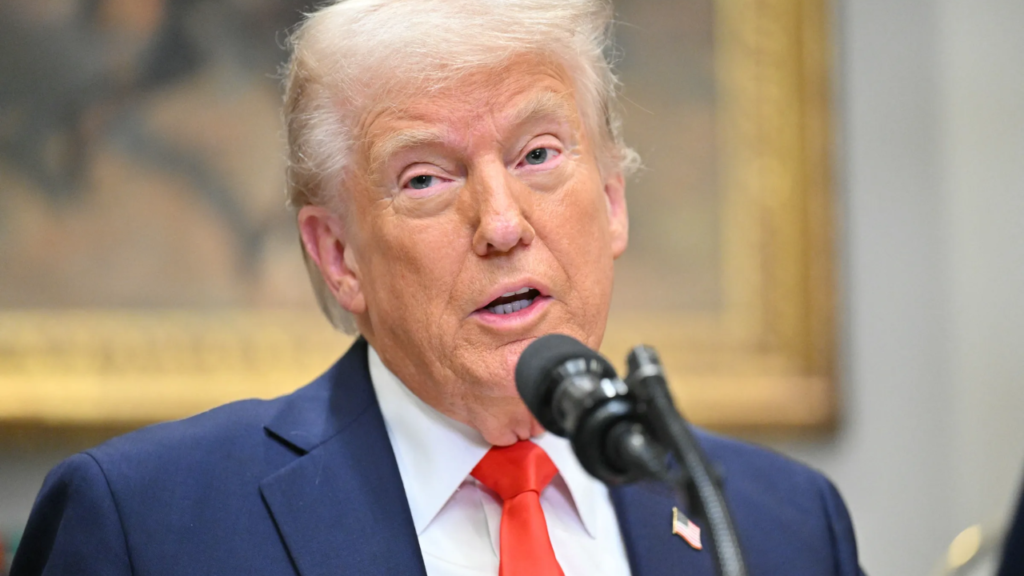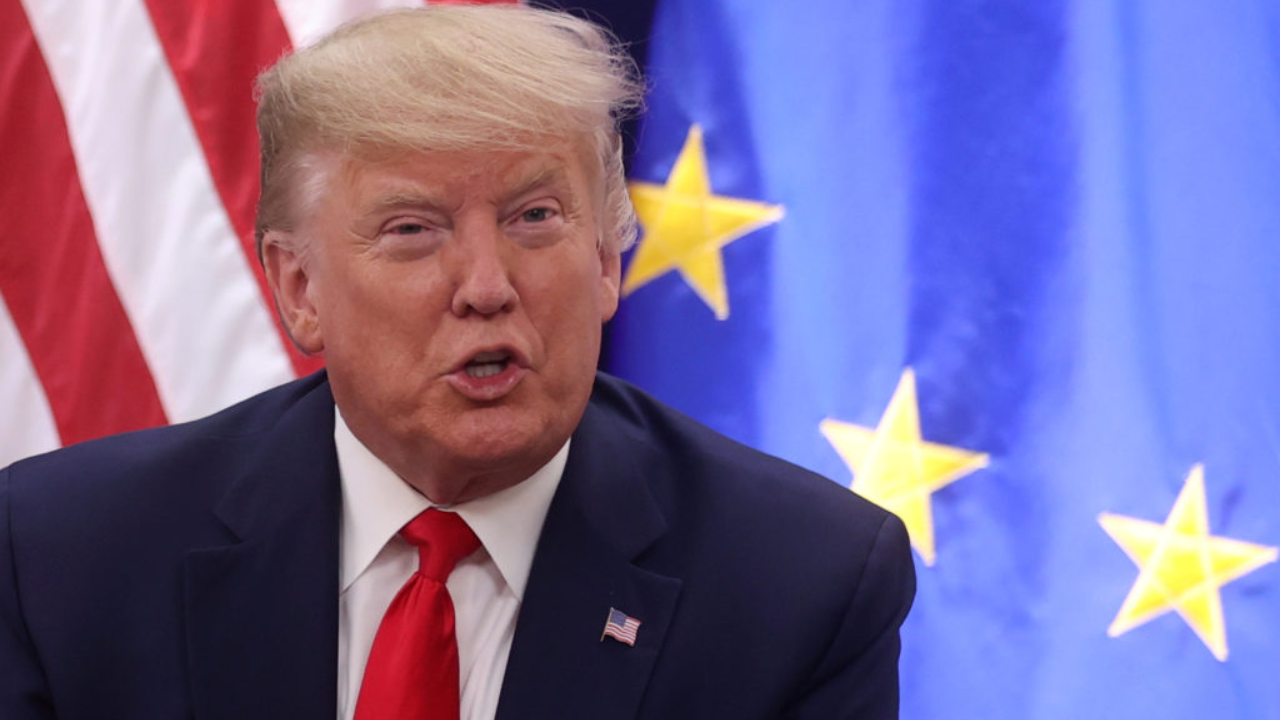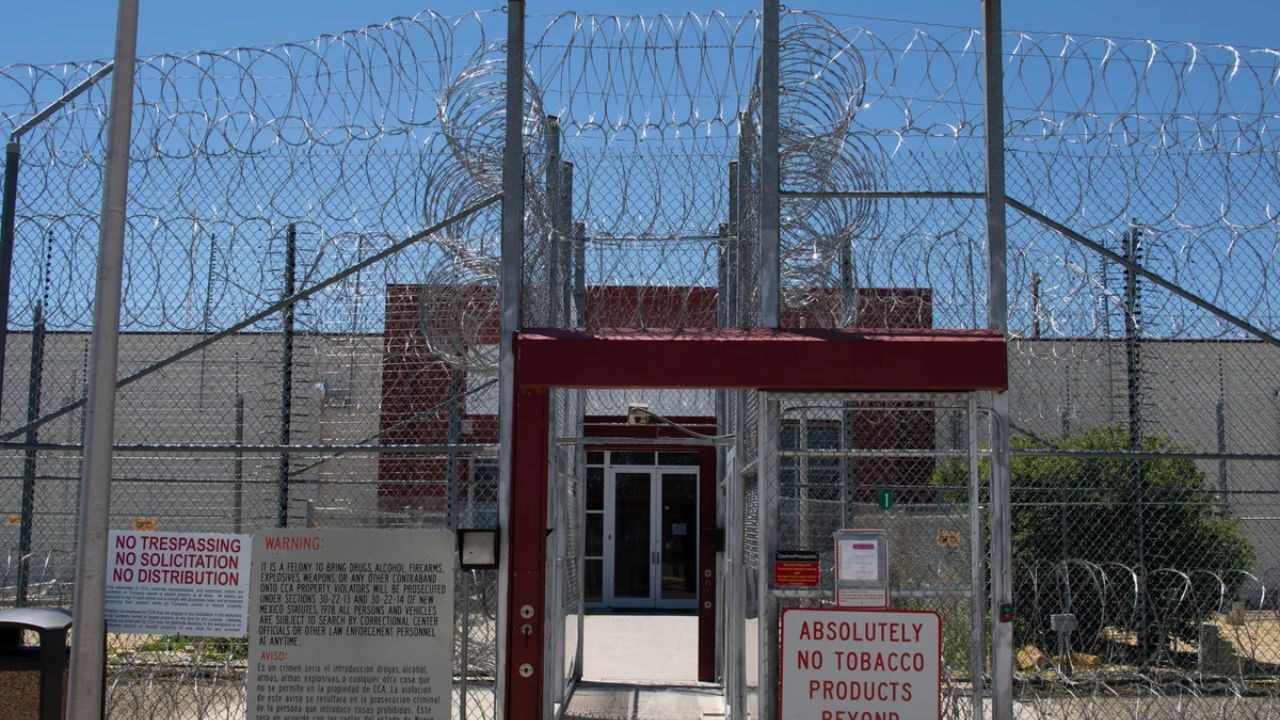Former U.S. President Donald Trump has defended blaming Joe Biden for the recent economic downturn, even though the poor GDP numbers came during Trump’s term.
The U.S. economy shrank by 0.3% in the first quarter of 2025, the first decline in three years. Many experts say the drop is linked to Trump’s tariff policies, which disrupted business operations and supply chains.
Earlier, Trump took to his platform, Truth Social, where he wrote that this economic performance was “Biden’s stock market, not Trump’s.” He claimed that his presidency began on January 20th and suggested that the negative data was a leftover from the Biden administration.
“We have to get rid of the Biden overhang,” he said. “This will take a while. Has nothing to do with tariffs.” He also asked Americans to be patient, promising that a massive boom was on the way.
But when questioned about how he could blame Biden for a decline that happened under his leadership—especially after taking credit for stock market highs that occurred just before his term began—Trump appeared to backtrack.
He told reporters, “I’m not taking credit or discredit for the stock market.” He then said his team inherited a mess and praised his current officials as being far better than the previous administration.
Trump went on to talk about inflation under Biden, calling it the worst in American history. He claimed that under his first term, the stock market saw an 88% rise, and that while he doesn’t see the stock market as everything, it reflects the bad shape of the economy he inherited.
He said inflation under Biden “ate away at people,” and added that his new policies would eventually lead to record growth.
However, many economists and analysts disagree. They believe Trump’s new wave of tariffs is one of the main reasons for the slowdown.
Businesses rushed to import goods before tariffs kicked in, which led to a sharp rise in imports—over 40%—and that had a direct impact on GDP.
When imports rise faster than exports, GDP goes down. Exports only rose 1.8% during this time. This difference, the largest seen since 1947, pulled down the overall economic growth.
During this quarter, federal spending also fell by about 5%, further weakening the economy. Compared to this, the economy had grown by 2.4% during the last quarter under Biden’s administration.
Despite these facts, White House Press Secretary Karoline Leavitt repeated Trump’s line, blaming Biden for the weak start to the year.

She said Biden’s “economic disaster” was still weighing down growth, but claimed Trump had brought in strong momentum through investment and job creation. She also said the U.S. was on the path to an “economic boom.”
Wall Street showed mixed reactions. The S&P 500 rose slightly, the Dow gained 141 points, but the Nasdaq fell. These swings showed the uncertainty in the market as investors tried to make sense of the new tariffs and their impact.
Trump also commented on China, where his tariffs have created tension. He said he doesn’t want China to suffer economically, but hopes to make a deal eventually. He emphasized that his goal was not to damage other countries, but to bring jobs and production back to the U.S.
Some experts warned that the current slowdown may not yet be a recession, but the risks are growing. A recession is usually defined as two quarters of falling GDP. If the tariffs remain in place, experts say it’s more likely that the U.S. will fall into a recession.
Big firms like S&P Global Ratings said the weak numbers were likely due to businesses stockpiling imports before tariffs, which may not reflect the true strength of the economy.
Consumer spending also slowed down sharply, from 4% last quarter to just 1.8% now. It’s the slowest pace since mid-2023. However, business spending rose by nearly 10% as companies tried to prepare for possible price increases.
Inflation, which had peaked in 2022, has now cooled slightly. Job growth and unemployment numbers are still holding steady, which is a positive sign. But overall, the economy is in a sensitive position, and much will depend on whether tariffs continue and whether businesses feel confident moving forward.
Gregory Daco, chief economist at Ernst & Young, told CNN that while it’s not a recession yet, the economy is at a tipping point. “The longer the tariffs stay, the more likely we’re heading into a downturn,” he said.
Disclaimer- Our team has thoroughly fact-checked this article to ensure its accuracy and maintain its credibility. We are committed to providing honest and reliable content for our readers.






